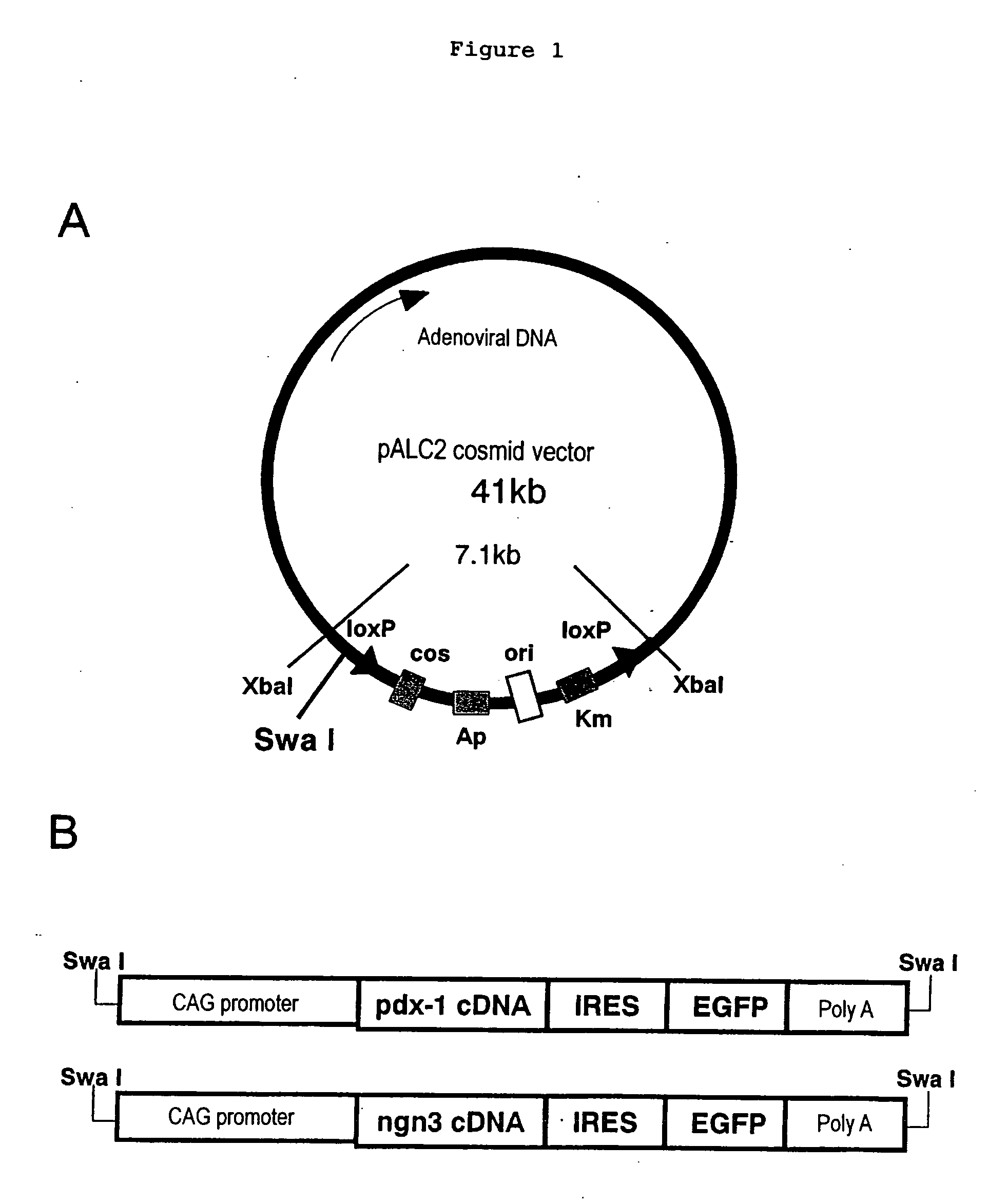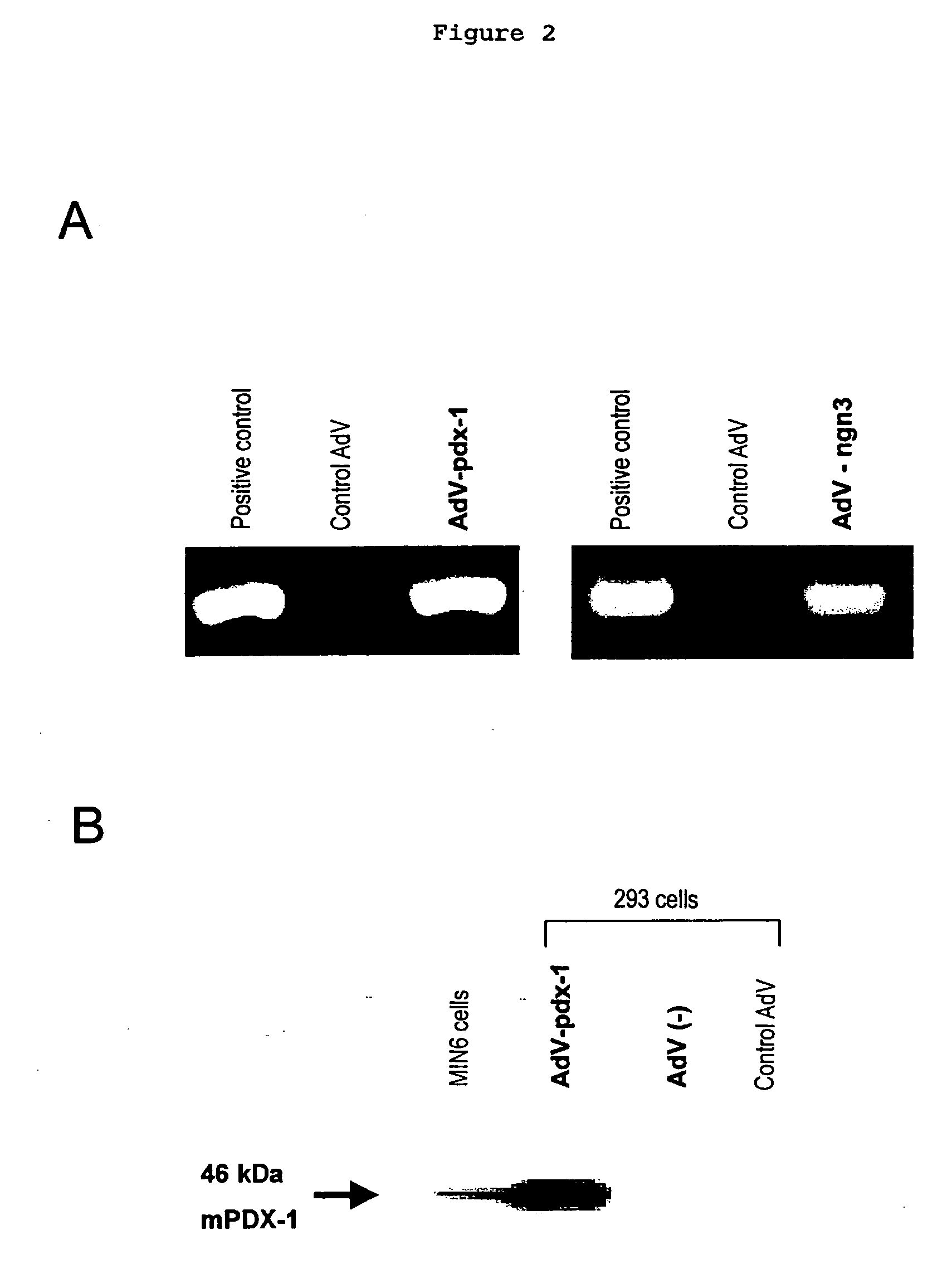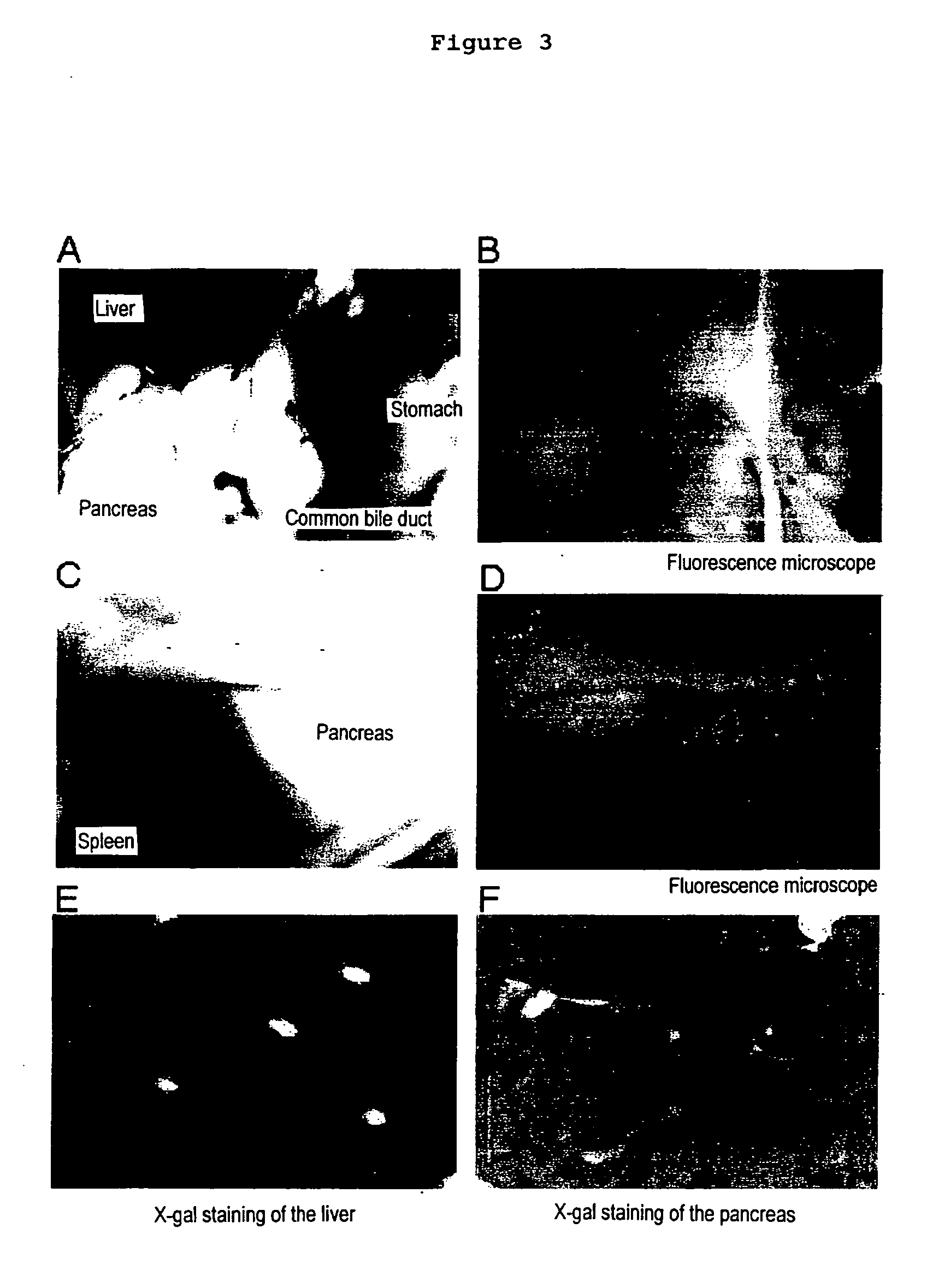Induction of the formation of insulin-producing cells via gene transfer of pancreatic beta-cell-associated transcriptional factor
a transcription factor and pancreatic beta cell technology, applied in the field of induction of the formation of insulin-producing cells through gene transfer of pancreatic beta cell-associated transcription factor, can solve the problems of insufficient number of donors for pancreatic islets, poor transfer efficiency in organs, and need for long-term immuno-suppression against rejection
- Summary
- Abstract
- Description
- Claims
- Application Information
AI Technical Summary
Benefits of technology
Problems solved by technology
Method used
Image
Examples
examples
[0027] The present invention will now be explained in more detail with reference to the examples. The technical scope of the present invention, however, should not be limited to these examples.
[0028] A. Experimental Method
[0029] A-1. Test Animals
[0030] 9-week-old male C57BL / 6J Jcl mice, 25-28 g in body weight, were used in all the experiments. The mouse chamber was kept at a constant temperature and the mice were maintained under the 12-hour light and dark cycles without assigning any particular limitation to the water and food intakes.
[0031] A-2. Construction of Adenoviral Vectors
[0032] A full-length cDNA of mouse pdx-1 (SEQ. ID. No. 1) used for integrating into an adenoviral vector, was cloned from the total RNA of MIN6 cells which is a mouse insulinoma-derived β cell line, and a full-length cDNA of mouse neurogenin3 (SEQ. ID. No. 3) was cloned from the total RNA of C57BL / 6J mouse brain by RT-PCR. Then their total base sequences were confirmed and used. By employing the metho...
PUM
| Property | Measurement | Unit |
|---|---|---|
| body weight | aaaaa | aaaaa |
| thickness | aaaaa | aaaaa |
| fluorescent | aaaaa | aaaaa |
Abstract
Description
Claims
Application Information
 Login to View More
Login to View More - R&D
- Intellectual Property
- Life Sciences
- Materials
- Tech Scout
- Unparalleled Data Quality
- Higher Quality Content
- 60% Fewer Hallucinations
Browse by: Latest US Patents, China's latest patents, Technical Efficacy Thesaurus, Application Domain, Technology Topic, Popular Technical Reports.
© 2025 PatSnap. All rights reserved.Legal|Privacy policy|Modern Slavery Act Transparency Statement|Sitemap|About US| Contact US: help@patsnap.com



